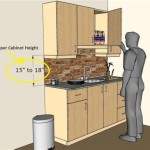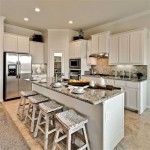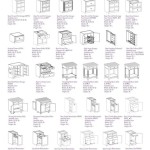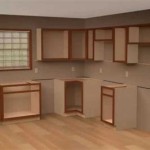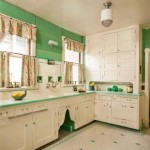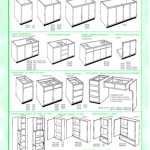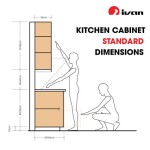Polymer Kitchen Cabinets: Pros and Cons
Polymer kitchen cabinets have become an increasingly popular choice for homeowners due to their unique blend of durability and affordability. Understanding the advantages and disadvantages of this material is crucial for making an informed decision during a kitchen renovation.
Polymer cabinets are constructed using a thermoplastic material, typically a blend of polymers, resins, and fillers. This mixture is molded into the desired cabinet door and drawer front shapes. The resulting product offers a distinct set of characteristics that differentiate it from traditional wood or laminate options.
One of the most significant advantages of polymer cabinets is their resistance to moisture. Unlike wood, which can swell and warp when exposed to humidity, polymer material is impervious to water damage. This makes them an excellent choice for kitchens, which are inherently prone to spills and steam. The non-porous surface also prevents the growth of mold and mildew, contributing to a more hygienic kitchen environment.
Durability is another key benefit. Polymer cabinets are highly resistant to scratches, dents, and chips, making them a suitable choice for busy households. They can withstand daily wear and tear without showing signs of damage, maintaining their appearance over time. This resilience contributes to the long-term value of the investment.
Polymer cabinets offer a wide range of design options. Manufacturers can create various door styles, colors, and finishes, allowing homeowners to achieve their desired aesthetic. From sleek, modern designs to more traditional looks, polymer cabinets can cater to diverse tastes and seamlessly integrate into various kitchen styles. Some manufacturers even offer realistic wood grain textures, providing the appearance of wood without the associated maintenance requirements.
Cost-effectiveness is a significant factor contributing to the popularity of polymer cabinets. They typically offer a more budget-friendly option compared to solid wood cabinets while providing comparable durability. This allows homeowners to achieve a high-quality kitchen renovation without exceeding their budget constraints.
Ease of maintenance is another appealing aspect of polymer cabinets. Cleaning requires minimal effort, typically involving wiping with a damp cloth and mild detergent. The non-porous surface prevents stains from penetrating, making cleanup quick and easy. Unlike wood cabinets, they do not require regular polishing or sealing, saving homeowners time and effort.
Despite the numerous advantages, polymer cabinets also have certain limitations. One potential drawback is their susceptibility to heat damage. While they are generally resistant to moderate heat, prolonged exposure to high temperatures, such as from a hot pot placed directly on the surface, can cause discoloration or warping. Using trivets and heat pads is recommended to protect the cabinet surfaces.
Another consideration is the potential for fading over time, particularly in cabinets exposed to direct sunlight. While advancements in polymer technology have improved colorfastness, prolonged UV exposure can still lead to gradual color changes. Choosing lighter colors or utilizing window treatments can mitigate this issue.
The repairability of polymer cabinets can also be a concern. While minor scratches can sometimes be buffed out, more significant damage can be challenging to repair seamlessly. Depending on the extent of the damage, replacement might be the only viable option, which can be inconvenient and costly.
Weight capacity can be a limitation, especially for heavier items. While polymer cabinets are generally sturdy, they may not be as robust as solid wood cabinets when it comes to supporting substantial weight. Care should be taken to avoid overloading shelves and drawers, particularly with heavy cookware or appliances.
The perceived value of polymer cabinets compared to solid wood can also be a factor for some homeowners. While offering excellent durability and functionality, they may not hold the same perceived prestige as solid wood, which can influence resale value in certain markets. This is primarily a matter of personal preference and market perception.
The environmental impact of polymer cabinets is another aspect to consider. While some manufacturers are incorporating recycled materials into their production processes, polymer is essentially a plastic product derived from petroleum. The manufacturing process and eventual disposal can have environmental implications. Homeowners concerned about sustainability should research manufacturers committed to eco-friendly practices.

What Are The Pros And Cons Of Acrylic Kitchen Cabinets

A Guide To Modern Pvc Kitchen Cabinets And

Why Use Pvc Kitchen Cabinets For Modular Kitchens Housing News

A Guide To Modern Pvc Kitchen Cabinets And

Why Use Pvc Kitchen Cabinets For Modular Kitchens Housing News

A Guide To Modern Pvc Kitchen Cabinets And

A Guide To Modern Pvc Kitchen Cabinets And

A Guide To Modern Pvc Kitchen Cabinets And

Polymer Polyester Thermoplastic Or Melamine Rochon

A Guide To Modern Pvc Kitchen Cabinets And
Related Posts

